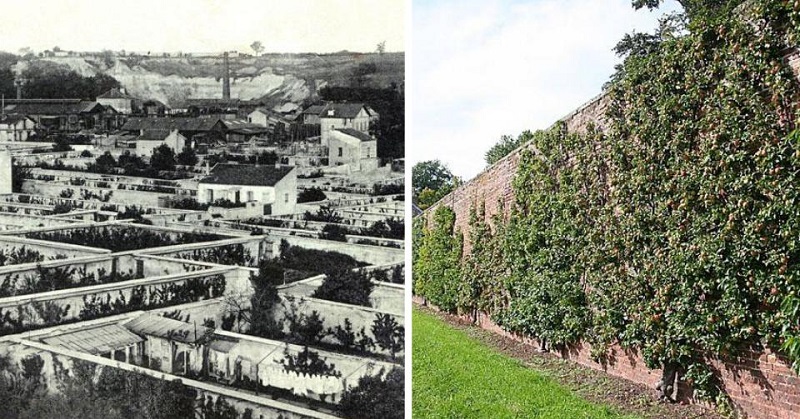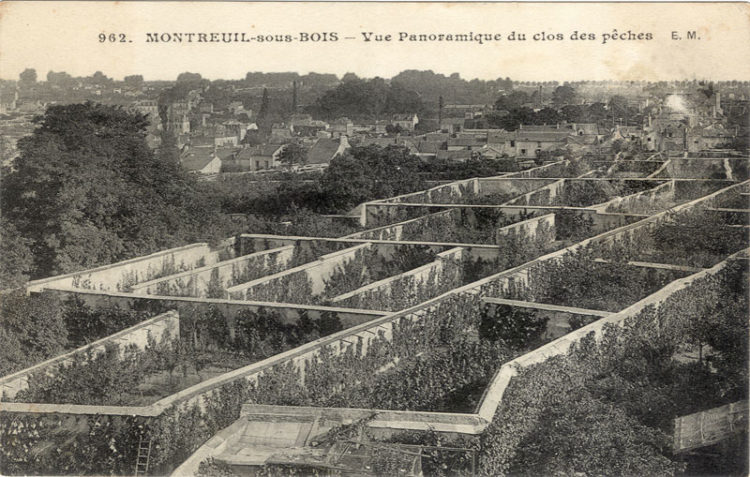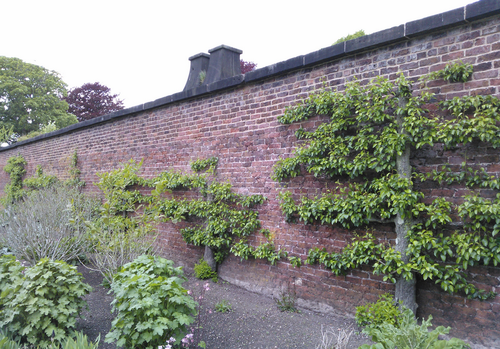Today, fruit graces the breakfast table and makes an appearance at lunch and dessert. Is this a new phenomenon with worldwide trade? Surprisingly, fruit actually has been a part of urban farming since the 1600s.
So common logic, and many experts, tell us we should buy local, seasonal food, right? Produce transported hundreds or thousands of miles just doesn’t have the same quality. And it makes sense. Not only has this food been transported a long distance, but it is often grown in greenhouses that suck up energy fast.
But growing produce in far-away lands and shipping long distances weren’t always such an intensive process. In fact, from the 16th to the 20th century, Mediterranean produce was grown using only renewable energy as far North as England and the Netherlands.
The secret laid in the construction of massive ‘fruit walls’ that would store heat during the day and release it at night, raising temperatures as much as 10 degrees Celsius.
The fruit wall would face sunlight during the day and soak up solar heat, creating a microclimate. The walls would also protect the crops from northern winds. Roof times or canopies could also shield crops from rain or hail.
If it sounds a bit like a greenhouse, that’s because it was a very similar concept. But unlike the modern incarnation of the greenhouse, the ancient crop-growing process known as espalier was actually very energy-friendly.
To give you a little perspective, the FAO states that crops grown in heated greenhouses demand as much as 20 times the energy needed for crops grown in open fields. From a country like the Netherlands, which produced the largest amount of greenhouse-grown crops in the world, that energy equates to half the amount of fossil fuels as used in Dutch cars.
This is largely due to the fact that every square meter of glass loses up to ten times as much heat as a traditional fruit wall.
The espalier process was perfected by Middle Age-period Europeans and was genius for its ability to save space and improve growing conditions.
Montreuil Fruit Walls
To see just how incredible fruit walls were, one only has to look at the Paris suburb of Montreuil, which had over 600 km of fruit walls built in the 1870s, when the agricultural industry was at its peak. The structures were so massive and confusing that the Prussian army simply left Montreuil alone during the siege of Paris in 1870.
Even more impressive was the amount of produce Montreuil was able to produce: 17 million fruits per year. And it was high quality fruit, renowned for its luxury.
Thomery Fruit Walls
A similar practice was carried out in Thomery in the year 1730. Thomery is about 60 km southeast of Paris, which is a rather northern area to grow grapes. And yet, the southeastern-facing fruit wall structures managed to keep the frigid temperatures out and produce grapes of incredible quality, considering their location.
Heated Fruit Walls In Britain
Fruit walls had a very interesting twist in England. Growers artificially heated the walls with horizontal pipes, using fire to heat either the air or the water inside.
So, if these walls worked well for so long, why the popularity of greenhouses? Beginning in the 1890s, all-glass greenhouses were first built in Belgium. Specifically, the invention of the plate glass production method increased the affordability of large windows. The advancement of fossil fuels also contributed, as it became easy (but very energy-intensive) to keep a glass building warm.






